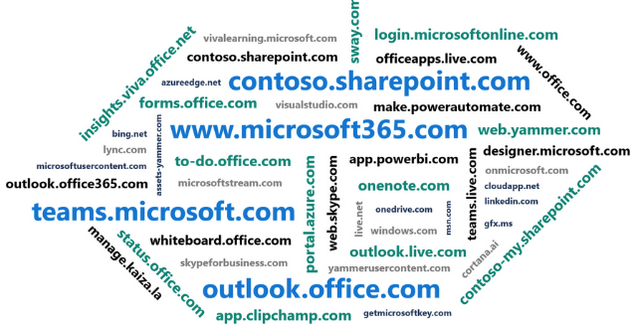 [German]Brief information for administrators of Microsoft solutions in companies. Microsoft wants to standardize the domain names previously used to access cloud functions, such as outlook.com, live.com, microsoft365.com, office.com, onenote.com, etc., in the future and make them accessible via sub-domains under the domain cloud.microsoft. This should also make it easier for users to access the URLs in question.
[German]Brief information for administrators of Microsoft solutions in companies. Microsoft wants to standardize the domain names previously used to access cloud functions, such as outlook.com, live.com, microsoft365.com, office.com, onenote.com, etc., in the future and make them accessible via sub-domains under the domain cloud.microsoft. This should also make it easier for users to access the URLs in question.
Advertising
Historically, much of what concerns the cloud at Microsoft has been created somewhat chaotically or has been purchased and then grown. As a user, you have to know umpteen URLs with specific domain names. Administrators may have to manage all the domains in their environment (e.g. in firewalls).

Microsoft Domains for services, source: Microsoft
The above image shows a slice of the sprawl that users and administrators have had to be aware of when trying to access Microsoft cloud services. Even Microsoft has noticed that as Microsoft Cloud services have grown, the domain space through which they can be accessed has grown vigorously over the years. There are hundreds of domains, and over time, this fragmentation brought greater and greater challenges for end-user navigation as well as ease of management for administrators. I would put it this way: The domain structure above perfectly reflects the chaos that is Microsoft.
Scott Schnoll, senior product marketing manager for Exchange Online, Exchange Server and Microsoft 365 Networking at Microsoft, addresses the issue in the a tweet. In the April 26, 2023 Microsoft announces in the Techcommunity article Introducing cloud.microsoft: a unified domain for Microsoft 365 apps and services that it's time to unify and simplify. The company has announced plans to reduce this fragmentation by consolidating authenticated, user-facing Microsoft 365 apps and services into a single, consistent and cohesive domain cloud.microsoft.
Microsoft plans this to simplify logging into cloud services for its users – the URL to access will then be composed of the name of the service and the domain (e.g. teams.cloud.microsoft). The delays caused by the redirection to the internal domain after logging in to the service are also to be eliminated.
Advertising
For administrators, this means a dramatic reduction in the complexity of the permission lists required to keep tenants secure while allowing users to access the applications and services they need to do their jobs, Microsoft writes. I wholeheartedly agree with both of these arguments.
In the Techcommunity post, Microsoft still provides some answers to additional questions in an FAQ. For example, some might wonder why cloud.microsoft, rather than microsoft.com, was used as the domain name. With a Top-Level-Domain (TLD) .microsoft the company owns the exclusive rights (similar to .gov for the US government). Microsoft expects its own TLD to improve the security, trustworthiness and integrity of its cloud offerings.
According to Microsoft, the term cloud before the dot of the TLD was chosen as a permanent, extensible, neutral term to establish a meaningful relationship with the wide range of Microsoft cloud services. Initially, only new Microsoft services will be made available in the cloud.microsoft domain. Existing services will then be transitioned at a slower pace so Microsoft can consider the impact. Microsoft writes that in most cases, no customer action is required to continue using Microsoft 365 cloud features.
Administrators looking to update their permission lists will find that *.cloud.microsoft has already been added to the official list of Office 365 URLs and IP address ranges. End users will find that existing links and bookmarks will automatically redirect them to the new domain after the move. Microsoft wants to make the transition as seamless as possible for its customers. If a change in network configuration is required by the customer, they plan to notify them at least 30 days in advance.
If deep customer actions are required (e.g., updates to customer applications), Microsoft wants to not only inform, but give customers enough time to adapt. The whole thing is a long-term project, and redirects will remain in place for years to ensure that older bookmarks, hyperlinks and connections continue to work with old domains. More details can be found in the Techcommunity article. For example, Microsoft is planning an Ask Microsoft Anything (AMA) on the topic on May 24, 2023.







